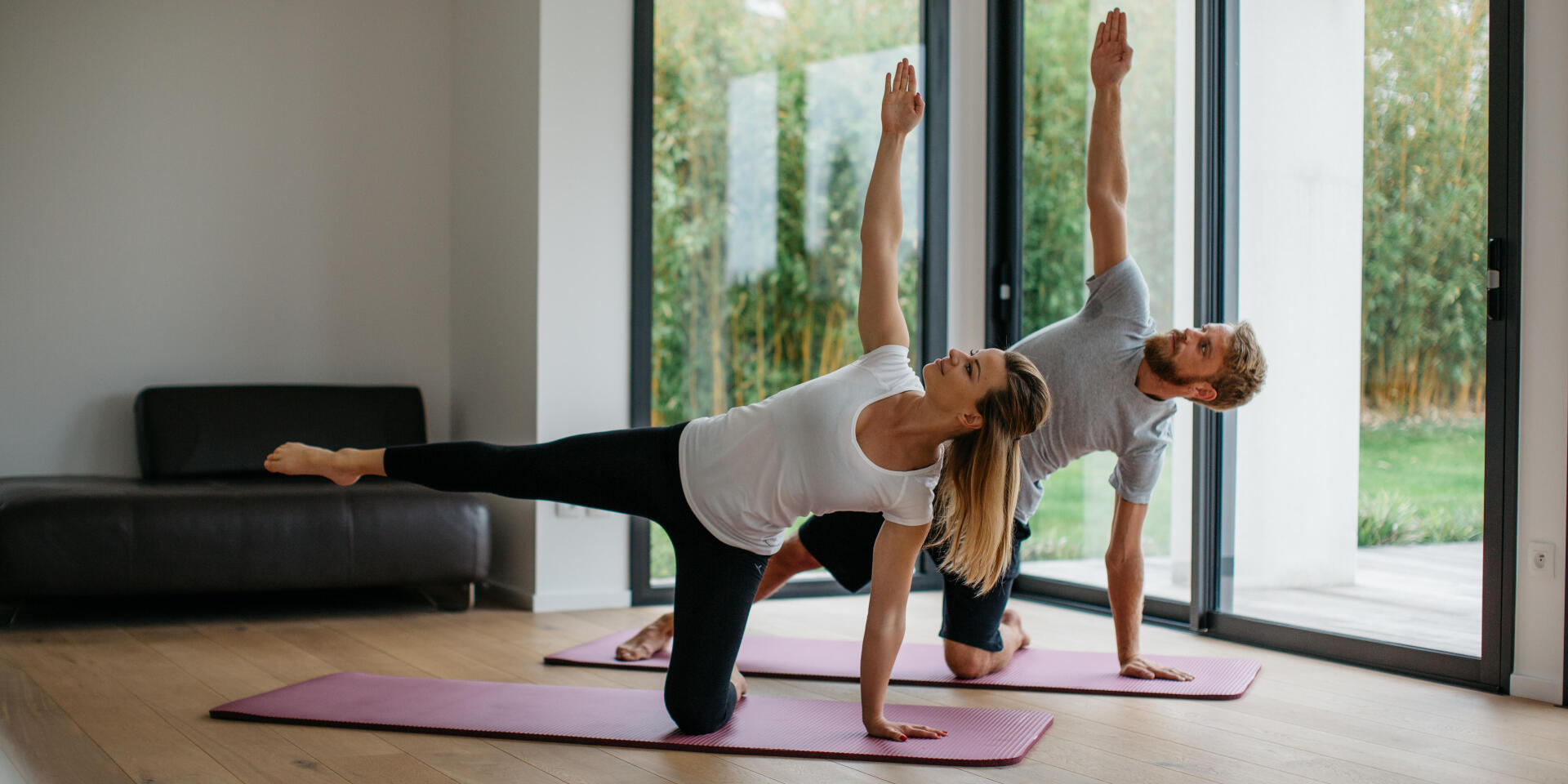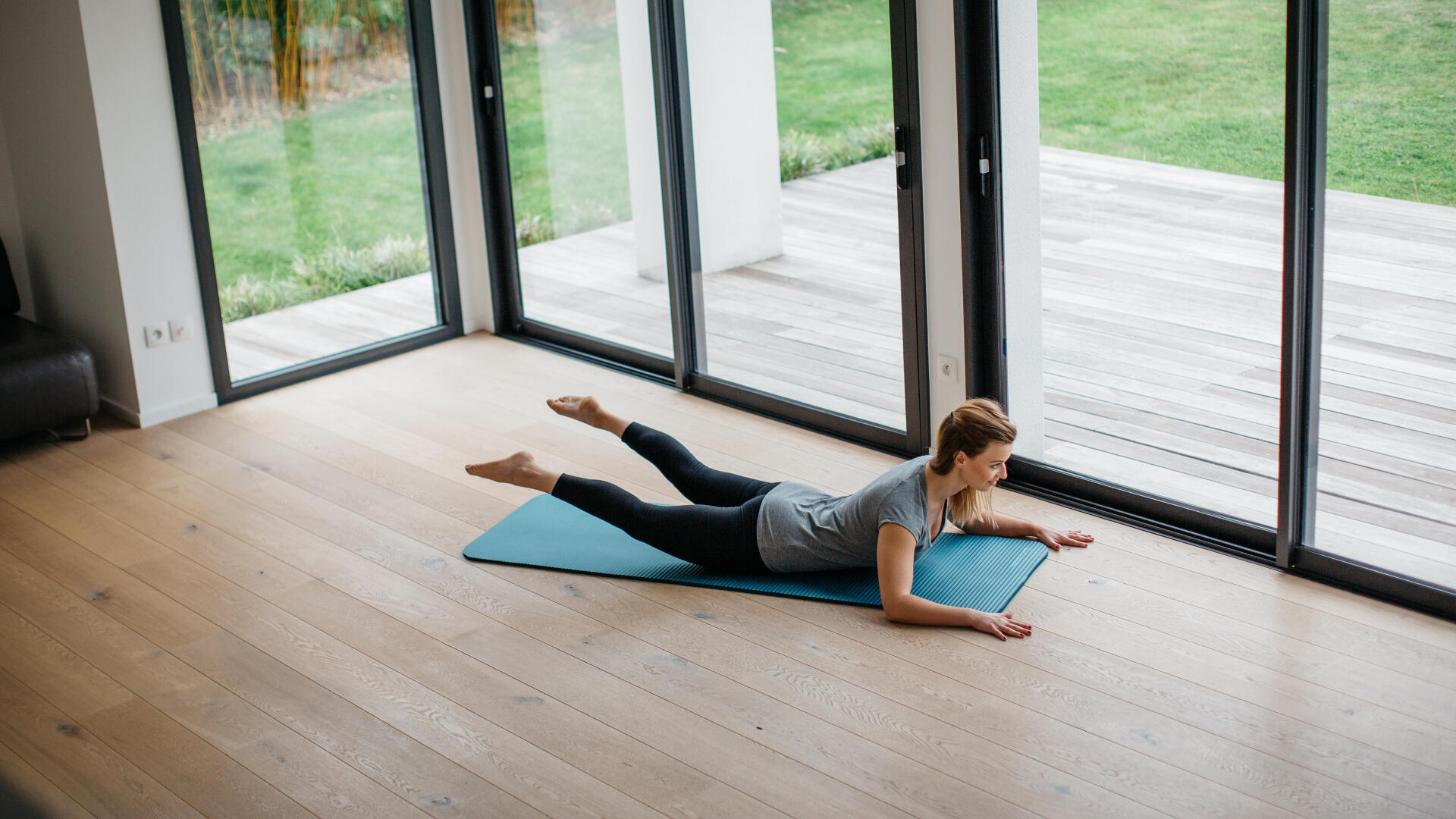Starting pilates off right
To make sure your first Pilates session goes well and you get the most out of it, follow our essential tips on how to set up for each exercise.
Neutral position: The neutral position is the intermediate position between having an arch or curve in your lower back.
Tip: Imagine your hips like a tub filled with water that mustn't tip forward or back.
Or, form a triangle with your thumbs and index fingers. Place your thumbs on your navel, then place your fingers flat on your abdomen. If you can see the tips of your fingers, this means your hips are in a neutral position.
Shoulders down: We tend to naturally raise our shoulders when doing an exercise, which can lead to tension and even pain in the neck.
Try to keep your shoulders down and relaxed.
Tip: Place your hands on your shoulders, elbows in front of you. Inhale and rotate your elbows back, then exhale and slide your shoulder blades down your back to feel them engage.
Keep this feeling of stability - not rigidity - throughout your session. It is as important as keeping your abs engaged during the exercises.
Lengthening: When you do the exercises, remember to lengthen your spine up to keep your back, neck and head properly aligned.
Tip: Imagine a thread attached at the crown of your head pulling up towards the ceiling as you lengthen and feel the space between each vertebra.
Engage your core:
All Pilates exercises are meant to do one thing: strengthen your core!
To quickly feel the effects, remember to always engage these muscles by hugging your navel in towards your spine.
With your core muscles engaged and contracted, you'll be able to move your arms and legs more smoothly and with more control and precision.




